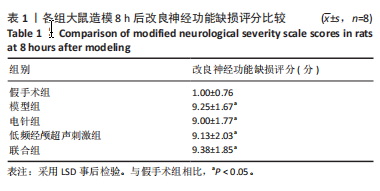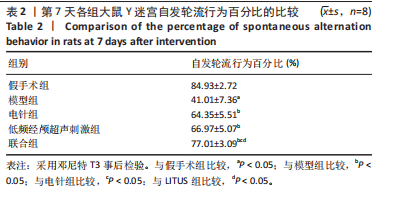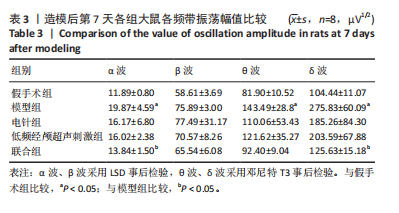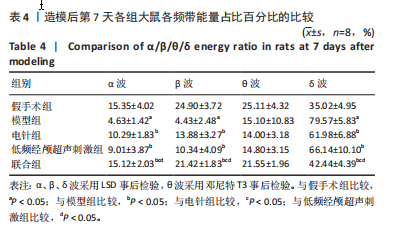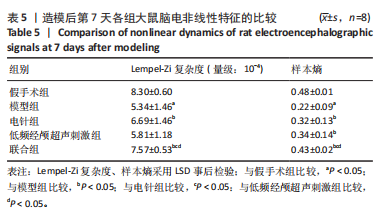[1] CAPIZZI A, WOO J, VERDUZCO GM. Traumatic brain injury: an overview of epidemiology, pathophysiology, and medical management. Med Clin North Am. 2020;104(2):213-238.
[2] LEFEVRE DC, COGNÉ M, PERDRIEAU V, et al. Definition and epidemiology of mild traumatic brain injury. Neurochirurgie. 2021; 67(3):218-221.
[3] MAAS IR, MENON DK, ADELSON PD, et al. Traumatic brain injury: integrated approaches to improve prevention, clinical care, and research. Lancet Neurol. 2017;16(12):987-1048.
[4] CARROLL LJ, CASSIDY JD, CANCELLIERE C, et al. Systematic review of the prognosis after mild traumatic brain injury in adults: cognitive, psychiatric, and mortality outcomes: results of the international collaboration on mild traumatic brain injury prognosis. Arch Phys Med Rehabil. 2014;95(3): S152-S173.
[5] MOTT TF, MCCONNON ML, RIEGER BP. Subacute to chronic mild traumatic brain injury. Am Fam Physician. 2012;86(11):1045-1051.
[6] STATEMENTS Q. VA/DoD clinical practice guideline for management of concussion/mild traumatic brain injury. J Rehabil Res Dev. 2009; 46(6):CP1-68.
[7] 贾丕丰, 李锋, 张卫峰. BIS联合GCS对创伤性脑损伤患者预后的预测作用[J]. 立体定向和功能性神经外科杂志,2020,33(4): 232-236.
[8] 郭爱红, 韩晓芳, 王丙聚. 脑电图分级评价标准在急性重症脑血管疾病中的临床应用 [J]. 陕西医学杂志,2012,41(7):863-864.
[9] 杜淑慧, 何小海, 赵晓玲, 等. 基于时空和频域特征的EEG帕金森疾病识别[J]. 电子测量技术,2023,46(3):121-127.
[10] 江茜茜, 元小冬, 吴宗武, 等. 脑电图对神经重症意识障碍患者预后评估的研究进展[J]. 中华危重症医学杂志(电子版),2017,10(6): 421-425.
[11] 陈毅, 姜呈, 王泽宁, 等. 连续脑电图监测在创伤性脑损伤中的应用[J]. 中国神经精神疾病杂志,2021,47(5):314-317.
[12] SHERR CJ, MCCORMICK F. The RB and p53 pathways in cancer. Cancer Cell. 2002;2(2):103-112.
[13] LU X, BAO XJ, LI JT, et al. High-frequency repetitive transcranial magnetic stimulation for treating moderate traumatic brain injury in rats: a pilot study. Exp Ther Med. 2017;13(5):2247-2254.
[14] RUDROFF T, WORKMAN CD. Transcranial direct current stimulation as a treatment tool for mild traumatic brain injury. Brain Sci. 2021; 11(6):806.
[15] 郭梁. 基于改进HR模型的经颅磁声电刺激仿真分析[D].天津: 河北工业大学,2021.
[16] 刘劼, 王雪玲, 资刘, 等. 早期电针干预对颅脑外伤术后患者意识状态的影响[J]. 中国针灸,2020,40(5):479-482.
[17] ZHENG T, YUAN Y, YANG HX, et al. Evaluating the therapeutic effect of low‐intensity transcranial ultrasound on traumatic brain injury with diffusion kurtosis imaging. J Magn Reson Imaging. 2020;52(2):520-531.
[18] PENG Y, ZHAO Y, HUANG YM, et al. Neuroprotective effects of low-intensity transcranial ultrasound stimulation combined with Baicalin intervention on traumatic brain injury in animals. Brain Res Bull. 2021; 175:246-253.
[19] 郭新荣, 王瑞辉, 李娜, 等. 针灸治疗颅脑损伤用穴规律的现代文献研究[J]. 时珍国医国药,2013,24(6):1433-1434.
[20] 张容超, 吴涛, 刘奇, 等. 电针对颅脑损伤大鼠脑组织中PI3K/AKT通路关键蛋白的影响[J]. 陕西中医,2022,43(3):279-282.
[21] 张凌星, 张晓莉, 张业宏, 等. 急性一氧化碳中毒迟发性脑病大鼠海马区长时程脑电信号研究[J]. 中国生物医学工程学报,2021, 40(5):559-566.
[22] 程琪琪. 损伤脑区功能恢复过程中的脑电信号非线性动力学研究[D]. 杭州: 杭州电子科技大学,2020.
[23] PAVLOVIC D, PEKIC S, STOJANOVIC M, et al. Traumatic brain injury: neuropathological, neurocognitive and neurobehavioral sequelae. Pituitary. 2019;22(3):270-282.
[24] 栾樱译, 姚咏明. 创伤性脑损伤研究新进展[J]. 国际外科学杂志, 2021,48(1):27-31.
[25] 杨文, 朱榆红. 细胞凋亡线粒体途径相关蛋白Bad和Bcl-xL参与缺血性脑卒中的研究进展[J]. 国际神经病学神经外科学杂志,2013, 40(3):270-273.
[26] ZHENG T, DU J, YUAN Y, et al. Effect of low intensity transcranial ultrasound (LITUS) on post-traumatic brain edema in rats: evaluation by isotropic 3-dimensional T2 and multi-TE T2 weighted MRI. Front Neurol. 2020;11:578638.
[27] 徐子绚, 宋杰, 王平, 等. 电针通过调节PI3K/AKT信号通路改善AD大鼠学习记忆能力[J]. 时珍国医国药,2022,33(6):1516-1519.
[28] 刘丹妮,孙光华,周桂娟,等. 电针水沟、百会穴对脑缺血再灌注损伤大鼠大脑皮质神经元凋亡的影响[J]. 中国组织工程研究,2022, 26(35):5620-5625.
[29] 尹亚龙,靳子言,吴新贵. 电针“内关”和”足三里”对脑梗死大鼠神经损伤修复及Orexin-A、炎性因子表达的影响[J]. 广西医科大学学报, 2023,40(3):406-412.
[30] 蔡红艳, 乔晶, 陈思茹, 等. 海马神经元敲低MCU改善阿尔茨海默病小鼠学习记忆功能障碍[J]. 生理学报,2022,74(5):715-725.
[31] 丁妍怡, 张胜行, 刘雨露, 等. 电针对血管性认知障碍大鼠脑功能局部一致性的效果[J]. 中国康复理论与实践,2022,28(1):55-61.
[32] 曹娅军, 王思诺, 余燕, 等. 电针“百会”“神庭”穴对血管性认知障碍大鼠海马泛素化修饰蛋白质组学的影响[J]. 中国康复医学杂志,2023, 38(8):1025-1034.
[33] 李敏, 戴红臣, 赵永, 等. 振幅整合脑电图联合血清NSE、hs-CRP水平对早产儿脑损伤的预测价值[J]. 郑州大学学报(医学版), 2023,58(4): 541-544.
[34] YOUNG GB, MCLACHLAN RS, KREEFT JH, et al. An electroencephalographic classification for coma. Can J Neurol Sci. 1997;24(4):320-325.
[35] 符锋, 张赛. 神经创伤救治新进展[J]. 中华神经创伤外科电子杂志, 2017,3(1):57-59.
[36] 曹迎新, 葛曼玲, 陈盛华, 等. 颞叶癫痫致痫侧静息态脑功能网络拓扑的特异性研究[J]. 中国生物医学工程学报,2022,41(1):10-20.
[37] HARPALE VK, BAIRAGI VK. Time and frequency domain analysis of EEG signals for seizure detection: a review//2016 International Conference on Microelectronics, Computing and Communications (MicroCom). Durgapur: IEEE, 2016:1-6.
[38] 杨廷强. 铅中毒大鼠清醒脑电特征研究[D]. 沈阳: 沈阳工业大学, 2022.
[39] HAVEMAN ME, VAN P, HOM HW, et al. Predicting outcome in patients with moderate to severe traumatic brain injury using electroencephalography. Crit Care. 2019;23(1):1-9.
[40] 王健, 黄立, 陈鑫, 等. 短潜伏期体感诱发电位联合脑电反应性对重度脑损伤患者预后的预测价值[J]. 中华医学杂志,2020,100(37): 2924-2928.
[41] ESPINOSA R, TALERO J, WEINSTEIN A. Effects of Tau and sampling frequency on the regularity analysis of ECG and EEG signals using ApEn and SampEn entropy estimators. Entropy (Basel). 2020;22(11):1298.
[42] ABÁSOLO D, HORNERO R, GÓMEZ C, et al. Analysis of EEG background activity in Alzheimer’s disease patients with Lempel–Ziv complexity and central tendency measure. Med Eng Phys. 2006;28(4):315-322.
[43] 曲洋, 侯娜, 杨勇. HD-tDCS对意识障碍患者脑电特征变化的影响研究[J]. 杭州电子科技大学学报 (自然科学版) ,2021,41(6):35-43.
[44] 罗志增, 鲁先举, 周莹. 基于脑功能网络和样本熵的脑电信号特征提取[J]. 电子与信息学报,2021,43(2):412-418.
[45] CAVANNA F, MULLER S, DE LA FUENTE LA, et al. Microdosing with psilocybin mushrooms: a double-blind placebo-controlled study. Transl Psychiatry. 2022;12(1):307.
[46] HARA T, ABO M, SASAKI N, et al. Improvement of higher brain dysfunction after brain injury by repetitive transcranial magnetic stimulation and intensive rehabilitation therapy: case report. Neuroreport. 2017;28(13):800-807.
[47] Fan L, Li Y, Huang ZG, et al. Low-frequency repetitive transcranial magnetic stimulation alters the individual functional dynamical landscape. Cereb Cortex. 2023;33(16):9583-9598.
[48] LOHSE A, MEDER D, NIELSEN S, et al. Low-frequency transcranial stimulation of pre-supplementary motor area alleviates levodopa-induced dyskinesia in Parkinson’s disease: a randomized cross-over trial. Brain Commun. 2020;2(2):fcaa147.
[49] RAFIQUE SA, STEEVES JKE. Modulating intrinsic functional connectivity with visual cortex using low-frequency repetitive transcranial magnetic stimulation. Brain Behav. 2022;12(2):e2491.
[50] SU Z, LIU M, YUAN Y, et al. Transcranial ultrasound stimulation selectively affects cortical neurovascular coupling across neuronal types and LFP frequency bands. Cereb Cortex. 2024;34(1):bhad465.
[51] SU Z, YAN J, JI H, et al. Time-frequency cross-coupling between cortical low-frequency neuronal calcium oscillations and blood oxygen metabolism evoked by ultrasound stimulation. Cereb Cortex. 2023; 33(8):4665-4676. |
